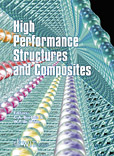Ballistic Perforation Resistance Of High Performance Concrete Slabs With Different Unconfined Compressive Strengths
Price
Free (open access)
Transaction
Volume
59
Pages
10
Published
2002
Size
706 kb
Paper DOI
10.2495/HPS020271
Copyright
WIT Press
Author(s)
T. Borvik, M. Langseth, O.S. Hopperstad and M.A. Polanco-Loria
Abstract
Ballistic penetration experiments have been carried out in a compressed gas gun using conical nosed steel projectiles and fibre reinforced h g h performance concrete slabs with nominal unconfined compressive strengths of 75 MPa, 150 MPa and 200 MPa. In all tests, nominal diameter, length, mass and hardness of the cylindrical projectiles were 20 mm, 98 m, 0.2 kg and HRC 53, respectively, while the thickness and the free span diameter of the target plates were 100 m and 500 m, respectively. A total of 21 concrete slabs were tested. In each test, the initial projectile velocity was measured and the residual velocity was d e t e m e d when possible. Furthermore, a digital high-speed camera system was used to photograph the penetration and perforation process. The ballistic l m t velocity for each target material was precisely determined. It was found that even though the unconfined compressive strength of the concrete was increased by almost a factor of three, the increase in ballistic l m t velocity (or capacity) was not more than about 20 %. Possible reasons for the experimental results will be discussed m view of the material behaviour of high strength concrete.
Keywords





